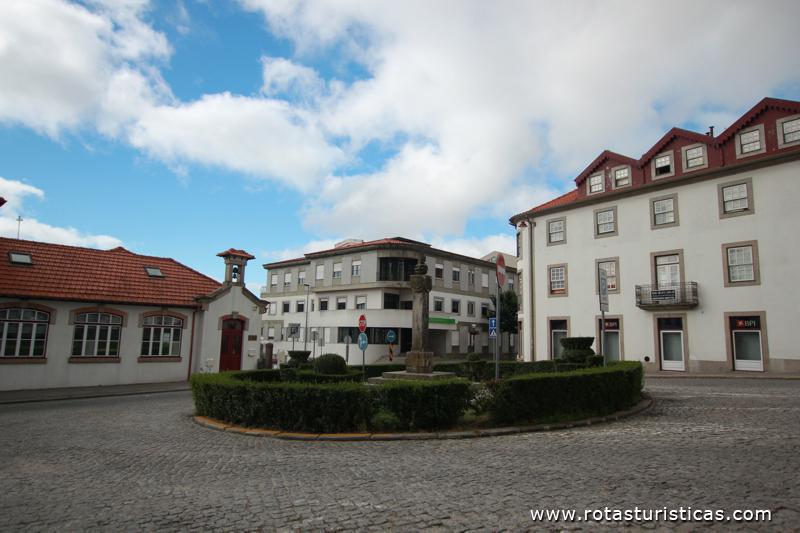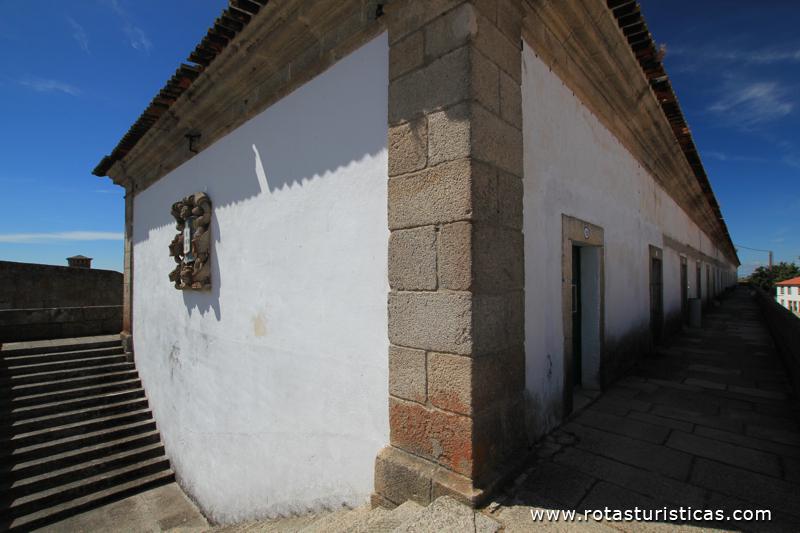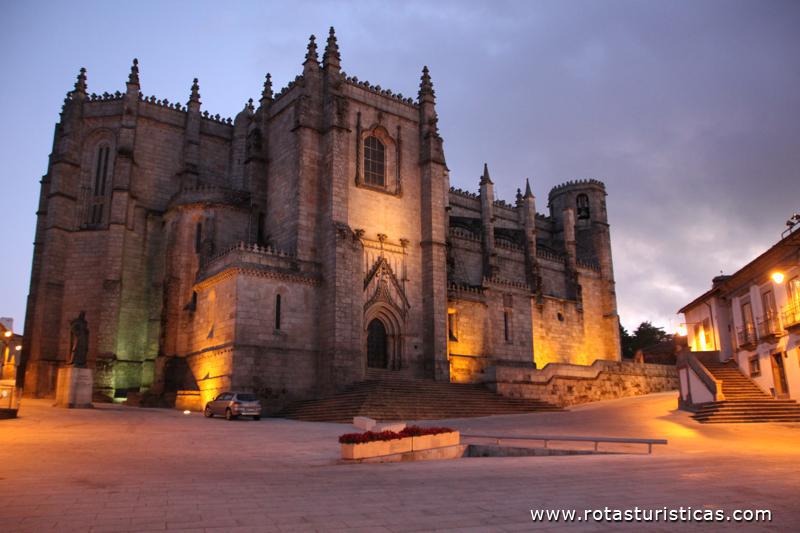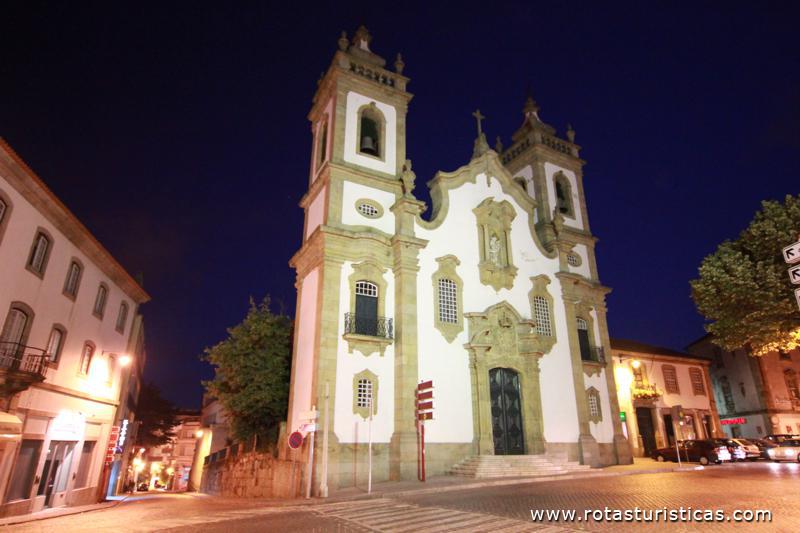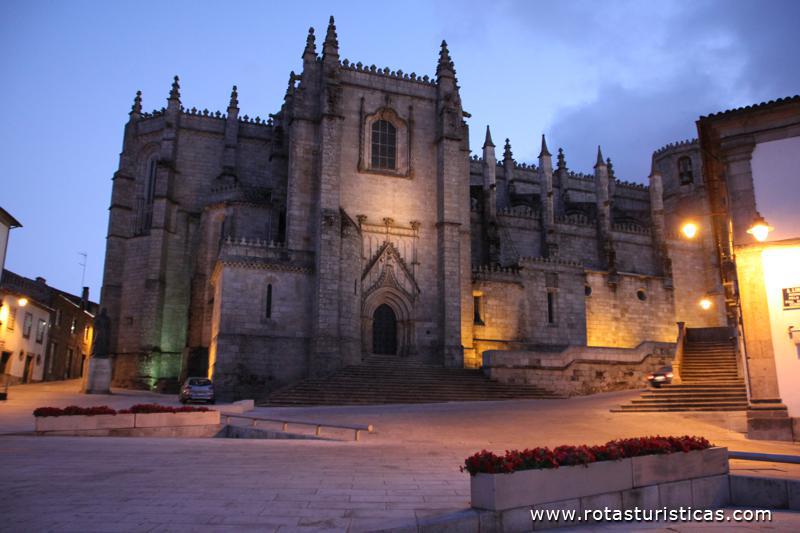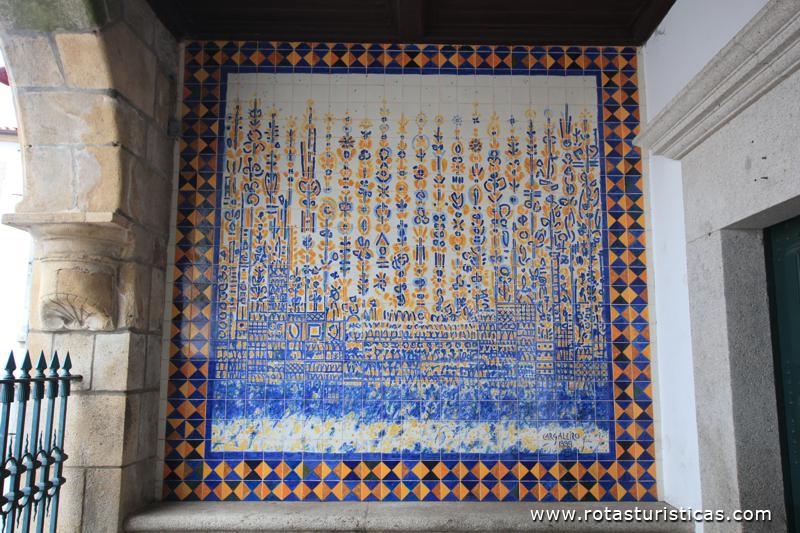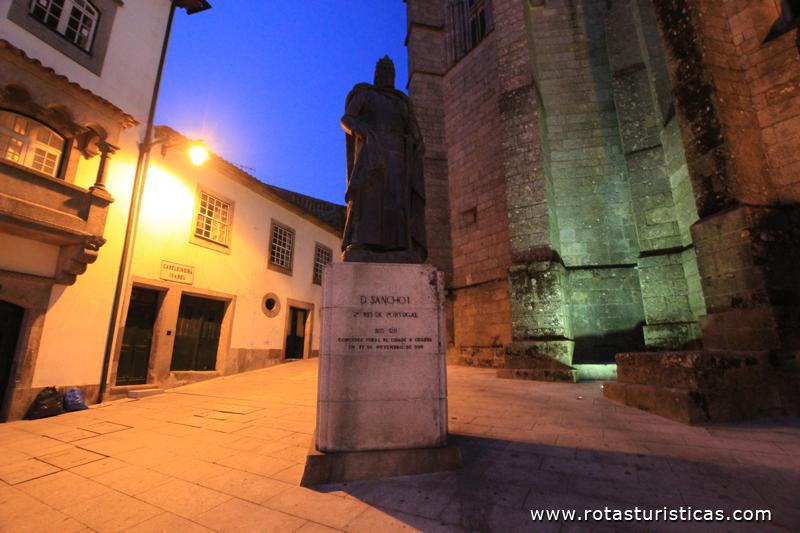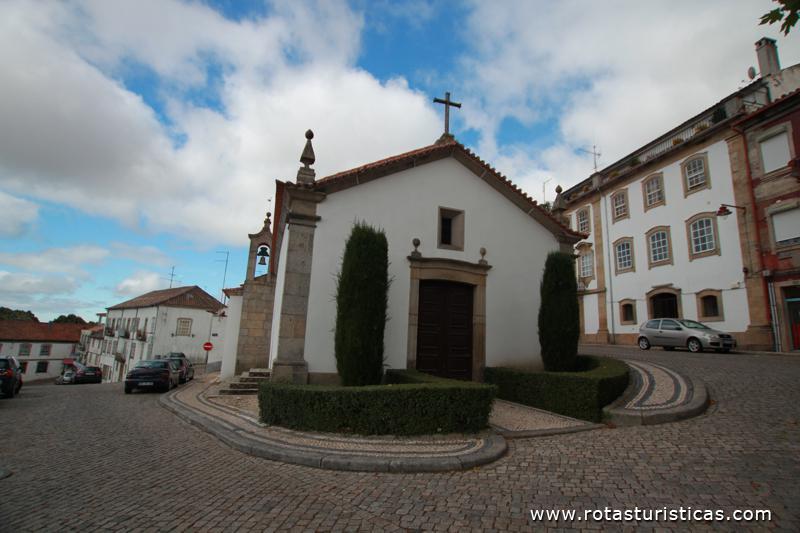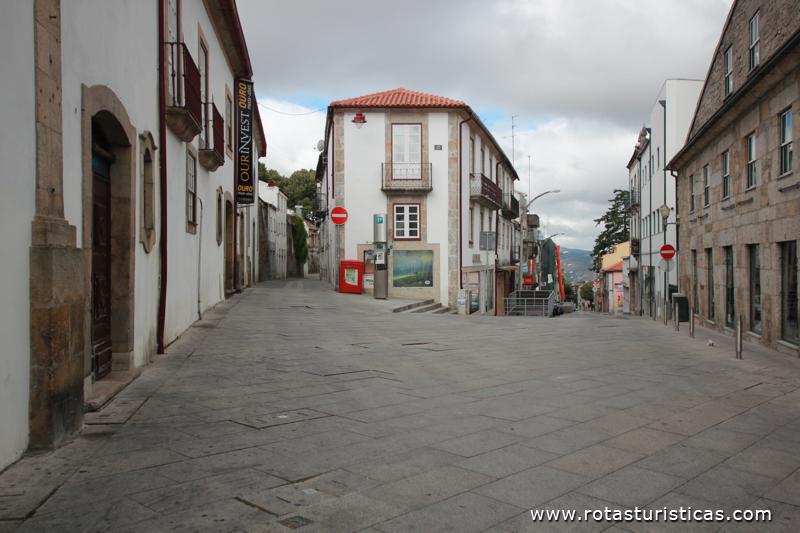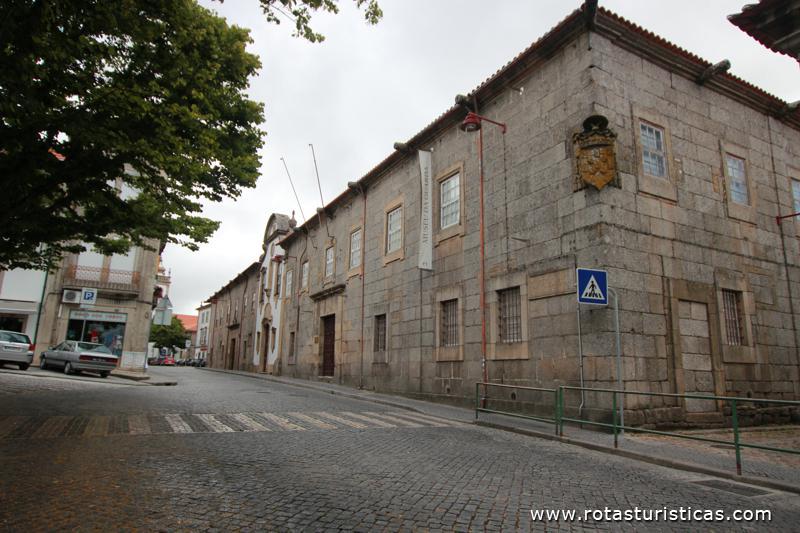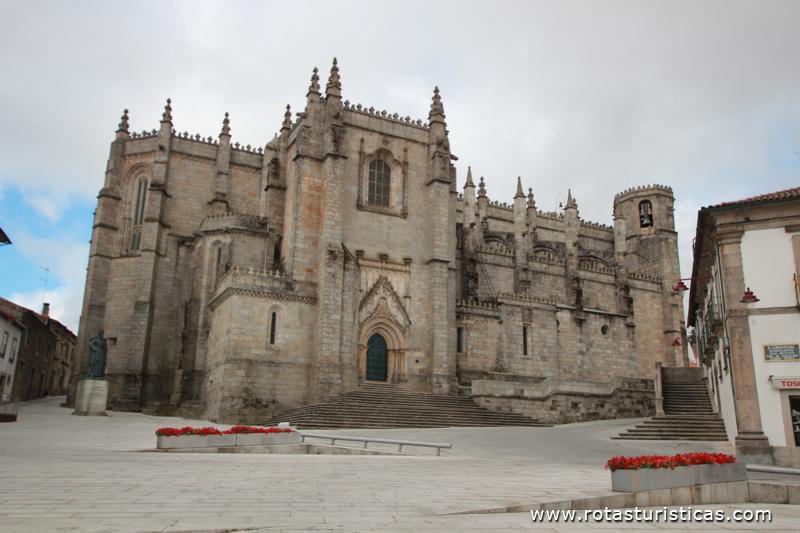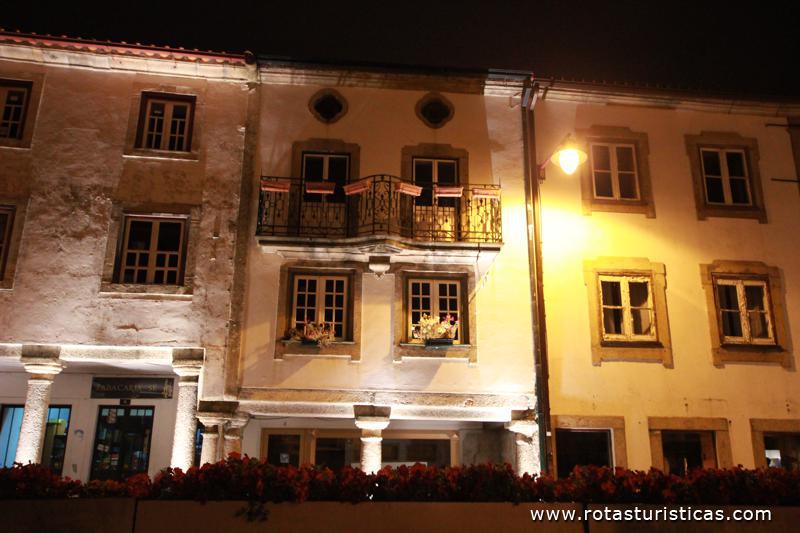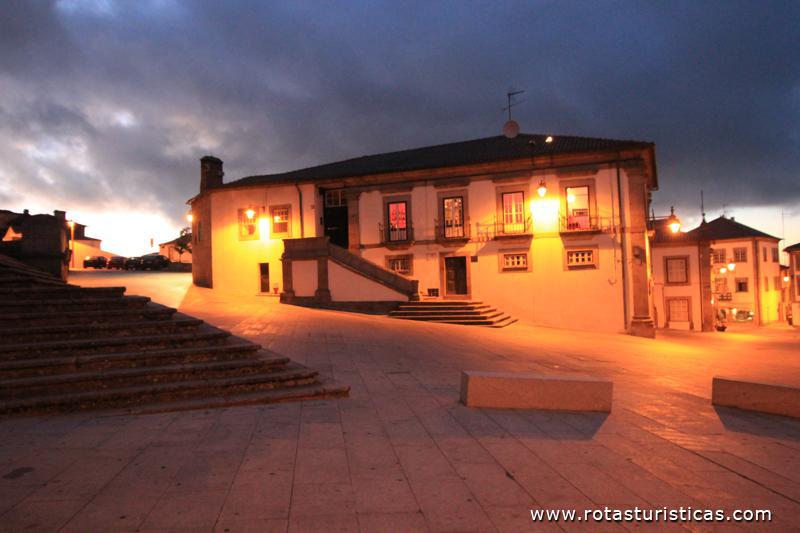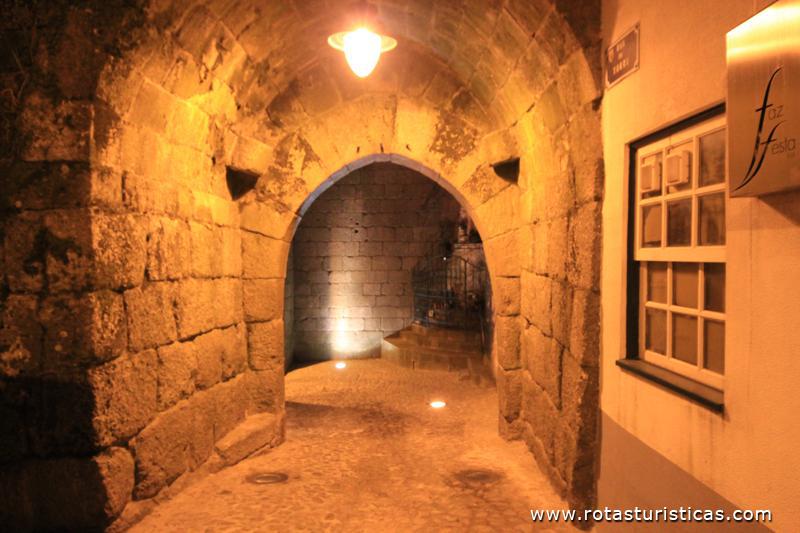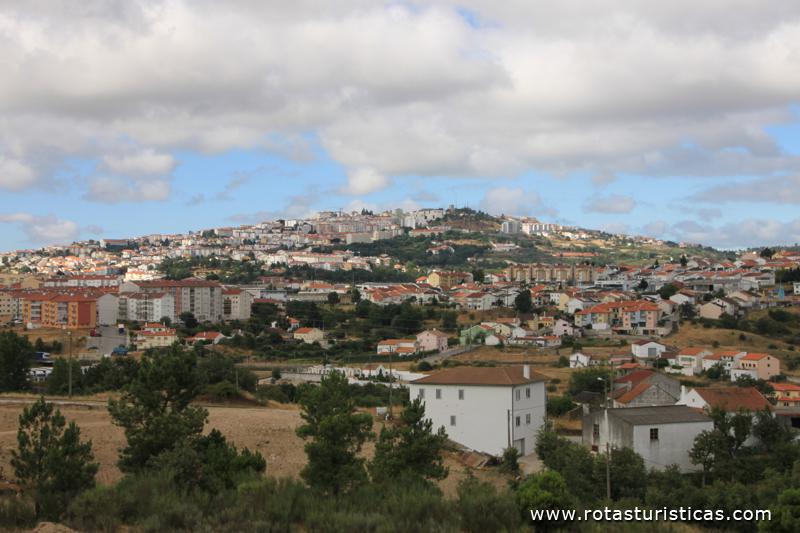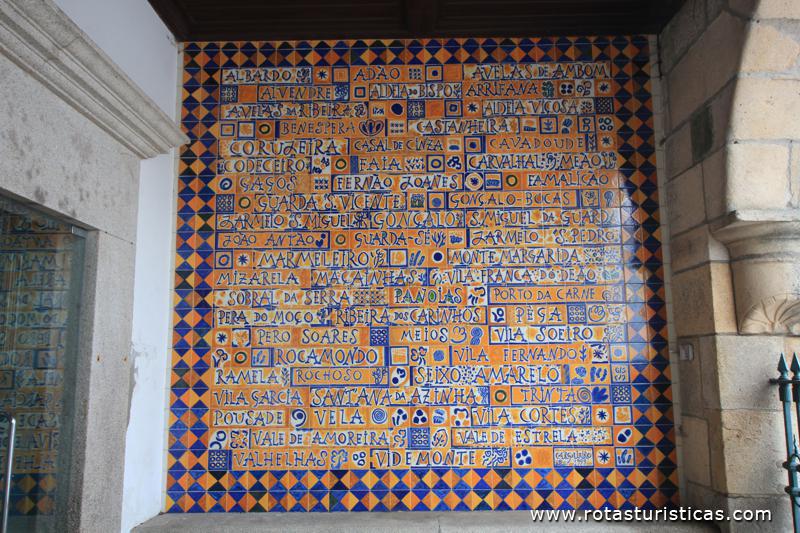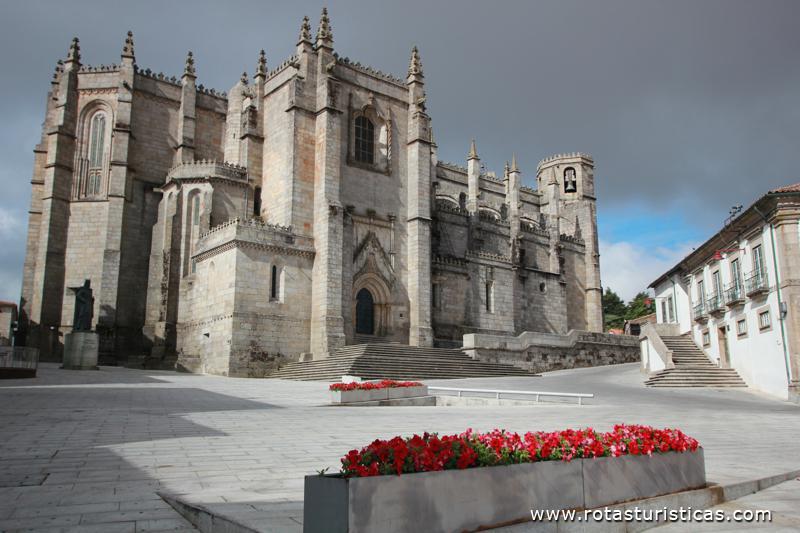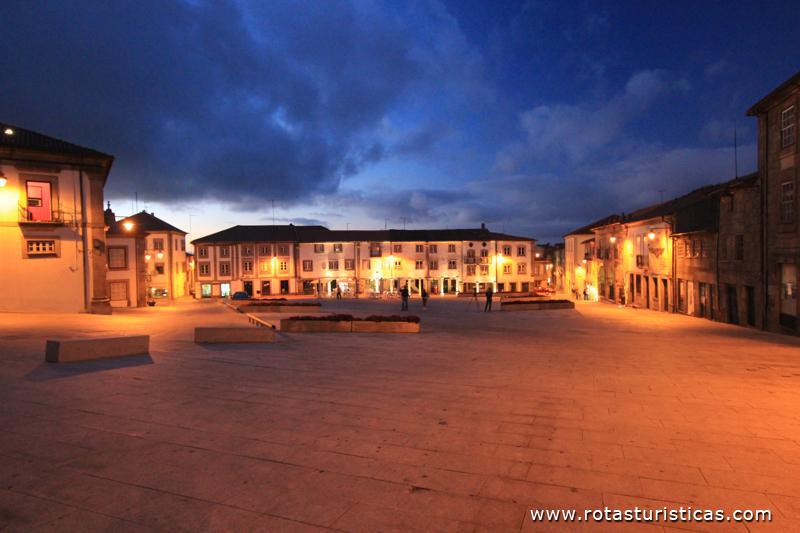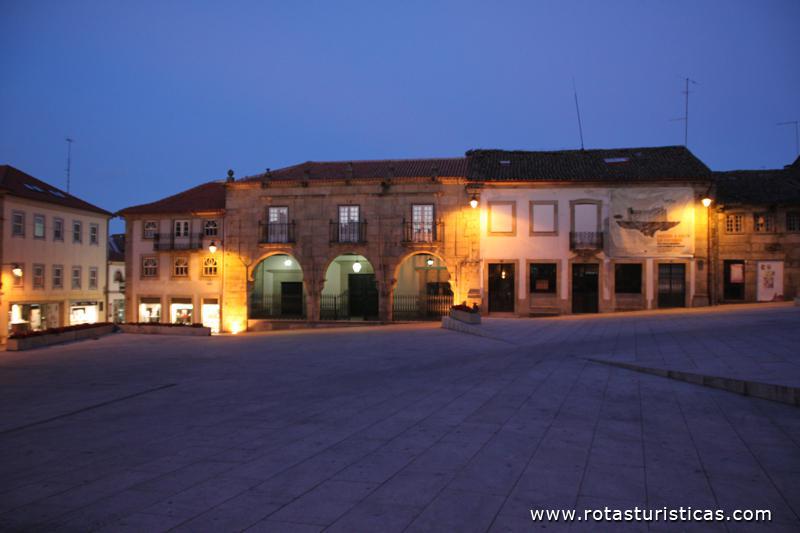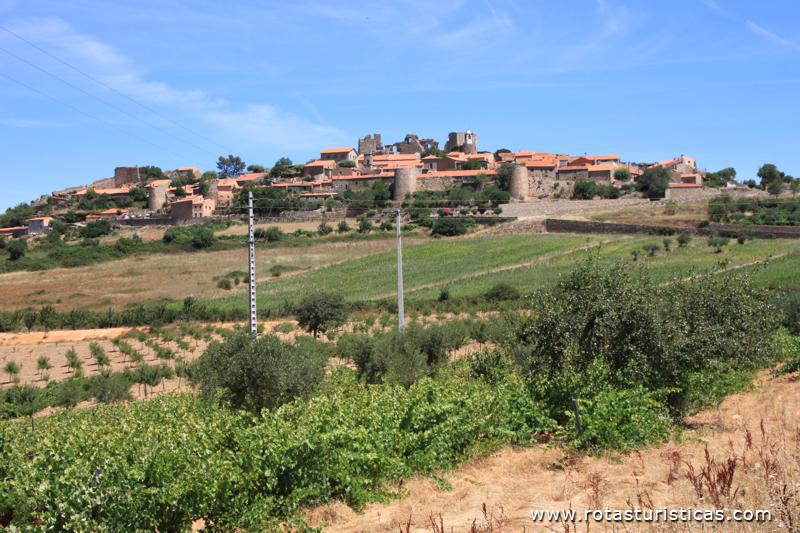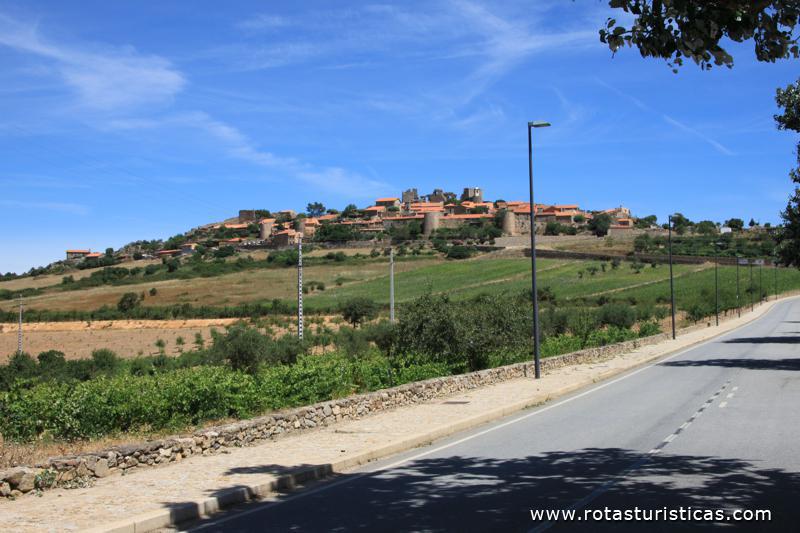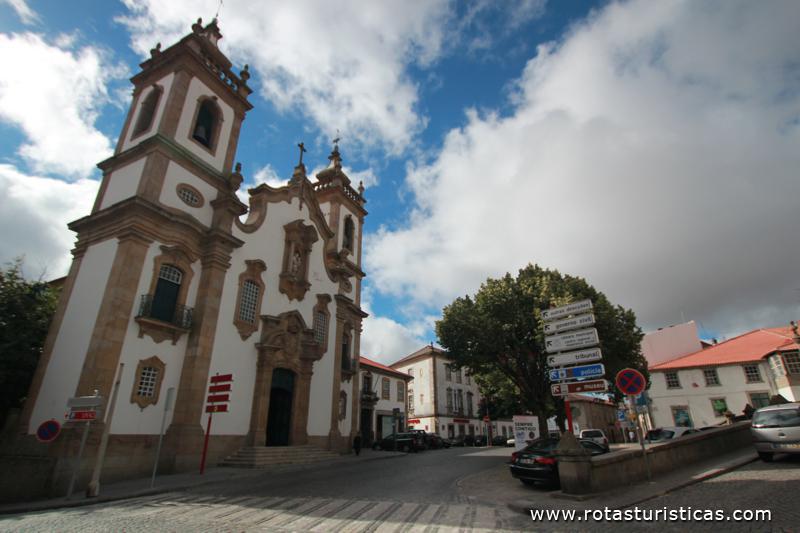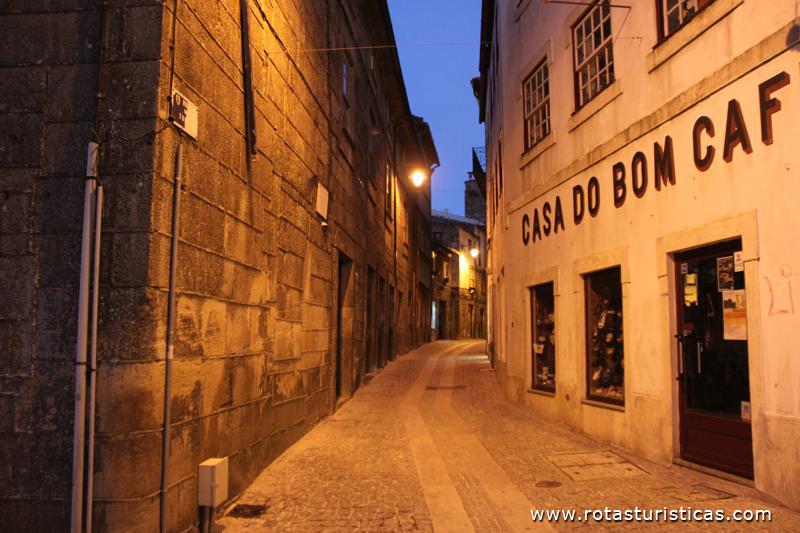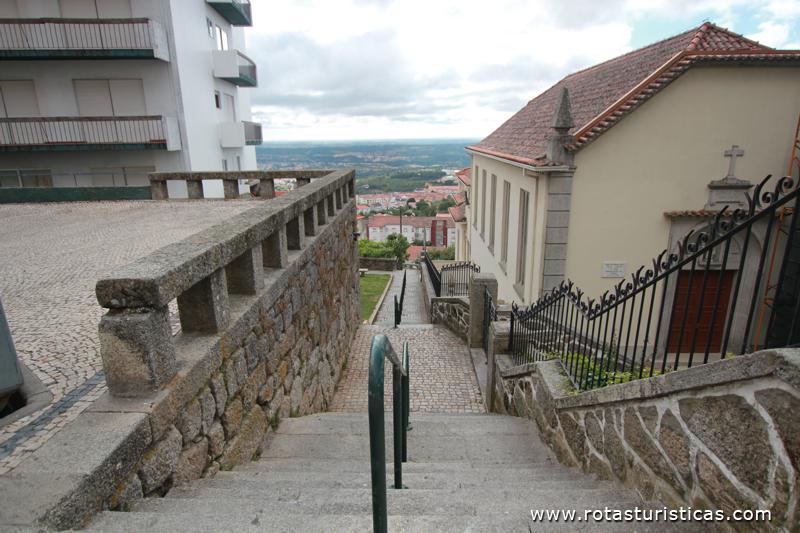Pictures of: Guarda
Location map
Airports
Hotels and other Accommodation
What to visit
Where to Eat
World Nomads
The Travel Insurance with the largest coverage

The Travel Insurance with the largest coverage

Guarda
The Guarda is a Portuguese city with 42 541 inhabitants, inserted in the county homologous with 712.1 km ² of area and subdivided in 43 parishes. The municipality is limited to the northeast by the municipality of Pinhel, to the east by Almeida, to the southeast by the Sabugal, to the south by Belmonte and Covilhã, to the west by Manteigas and by Gouveia and to the northwest by Celorico da Beira. Located in the last north-east counterpart of Serra da Estrela, at 1056 meters of altitude, being the highest city of Portugal. It is located in the central region of Portugal and belongs to the statistical sub-region of Beira Interior Norte.
It has important road accesses such as the A25 that connects it to Aveiro and Porto as well as to the border, connecting directly to Madrid; the A23 connecting Guarda to Lisbon and the south of Portugal, as well as the IP2 linking Guarda to Trás-os-Montes and Alto Douro, namely Bragança.
At the rail level, Guarda City has the Beira Baixa Line (closed for modernization works with an opening planned for 2020) and the Beira alta line, which is completely electrified allowing the circulation of regional, national and international trains , the main railway line for the transport of passengers and goods to the center of Europe, connecting Hendaye (France via Salamanca-Valladolid-Burgos).
It has important road accesses such as the A25 that connects it to Aveiro and Porto as well as to the border, connecting directly to Madrid; the A23 connecting Guarda to Lisbon and the south of Portugal, as well as the IP2 linking Guarda to Trás-os-Montes and Alto Douro, namely Bragança.
At the rail level, Guarda City has the Beira Baixa Line (closed for modernization works with an opening planned for 2020) and the Beira alta line, which is completely electrified allowing the circulation of regional, national and international trains , the main railway line for the transport of passengers and goods to the center of Europe, connecting Hendaye (France via Salamanca-Valladolid-Burgos).
Tourism
The whole city of Guarda has always been a hymn to granite, sung in the Romanesque art of the Mileu Chapel, in the Gothic and Manueline style of its Cathedral, or in the streets, squares and walls of its medieval city. It is certain that this hymn echoed in the Neolithic, in the Anta de Pêra do Moço and in the polished stone axes exhibited in the Guarda Museum. It continued through the Bronze Age and by the romanization, in the huts of Tintinolho and Jarmelo or in the section of Roman road next to the Dorna Fountain. Until 1199, the second king of Portugal, D. Sancho I founded the city, gave him the power of the Bishopric of Egypt and dedicated a song of his friend, in praise of an old love.
With the Afonsinos kings, D. Afonso II and D. Afonso III, the walls were concluded, with five doors. Today the monumental Tower of the Ferreiros and the Doors of the Erva and the King, guarded by the Tower of Menagem and connected by a route of fascinating streets that go around the Jewry, go to the manor Largo of the Paço do Biu, and of which the Rua Direita, now Rua Francisco de Passos, remains the main street.
In Praça Velha, or Praça Luís de Camões, was born the present Cathedral Cathedral, built between 1390 and 1540. From then on came more centuries, more styles and more monuments, but in all of them there is a face of granite that the city kept forever.
A walk in the city
From the Guarda Museum to the Cathedral. From the Old Square to the Jewish Quarter. Step by step through towers and ramparts, gardens and artistic churches or discovering a collection of medieval and Renaissance relics. Leaving Praça do Município, in the background is the Hotel Turismo, by Raúl Lino, near or near Jardim José Lemos, since 1246, the former Convent of S. Francisco and the current District Archive. Continuing, on the right, to Largo Frei Pedro, visit the Guarda Museum, housed in the seventeenth-century building of the former Seminary, joined by a Chapel to the Episcopal Palace.
By the charms of the Sierra. A trip through valleys covered by terraces, rivers that lie in reservoirs and villages to live in unforgettable landscapes. Always to the taste of the Natural Park of Serra da Estrela. Leaving the Guarda by Dr. Francisco Sá Carneiro Avenue, follow the EN 16. Cubo and Prado are villages by the side of the road, with the panorama of Caldeirão's bay in sight and the hill of Castro do Tintinolho next door.
In front of Chãos the EN 16 becomes a belvedere on the valley of the river Mondego. At km 166 leave the EN 16, turn left to Faia and Ramalhosa. Walk down to Quinta da Ponte, cross the river Mondego and cool off with the beauty of the place. Follow the sign to Mizarela, by a fertile hillside full of Farms and Lands. Mizarela and Pêro Soares are villages separated by the Mondego and joined by an old bridge. Here the river runs on a carpet of granite slabs and visits secular mills and mills.
Follow the ascent to the dam of Caldeirão Dam, looking at a scenario of endless terraces. On the dyke is the Mirador of the Royal Owl and, next to it, there is a granite wall for the lovers of the climbs.
Continue straight on to Corujeira, along the Caldeirão's Albufeira until you reach Thirty. On the way to Videmonte, look at the greatness of the landscape and see how the water of the Mondego River passes through an underground tunnel to the reservoir, or meet unique trout fishing sites. Videmonte is a village of stone, of flocks and of good cheese of the Mountain range, but where the road ends. Return to Thirty and continue to Meios and Fernão Joanes, through a plateau full of rural riches and large chestnut trees. At the top of Famalicão is born the brook and the valley of the Caldeirão, through there it passes to EN 18-1. We turn right and start the Famalicão valley that will take us to the historic village of Valhelhas, on the banks of the river Zêzere. Before stopping in Famalicão to see a typical barrel of sticks and the landscape decorated with snowy peaks of the Tower.
Valhelhas was Roman, had castle and charter of D. Sancho I, in 1189, before the Guard. In Largo do Pelourinho there is the Church of Santa Maria, with outstanding bell tower.
Take the direction of Belmonte and next to the Bridge, on the river zêzere, turn left to Gonçalo that is land of craftsmen who make baskets and furniture in dick. The village has old streets, manor houses and manor houses. For Pebble Yellow the road climbs between forests and panoramas. In the re-encounter with the EN 18-1, turn right, with a last look over the Caldeirão valley, continuing to the Guarda by the EN 18, to go see the Castro de Jarmelo and the Anta de Pêra do Moço.
With the Afonsinos kings, D. Afonso II and D. Afonso III, the walls were concluded, with five doors. Today the monumental Tower of the Ferreiros and the Doors of the Erva and the King, guarded by the Tower of Menagem and connected by a route of fascinating streets that go around the Jewry, go to the manor Largo of the Paço do Biu, and of which the Rua Direita, now Rua Francisco de Passos, remains the main street.
In Praça Velha, or Praça Luís de Camões, was born the present Cathedral Cathedral, built between 1390 and 1540. From then on came more centuries, more styles and more monuments, but in all of them there is a face of granite that the city kept forever.
A walk in the city
From the Guarda Museum to the Cathedral. From the Old Square to the Jewish Quarter. Step by step through towers and ramparts, gardens and artistic churches or discovering a collection of medieval and Renaissance relics. Leaving Praça do Município, in the background is the Hotel Turismo, by Raúl Lino, near or near Jardim José Lemos, since 1246, the former Convent of S. Francisco and the current District Archive. Continuing, on the right, to Largo Frei Pedro, visit the Guarda Museum, housed in the seventeenth-century building of the former Seminary, joined by a Chapel to the Episcopal Palace.
By the charms of the Sierra. A trip through valleys covered by terraces, rivers that lie in reservoirs and villages to live in unforgettable landscapes. Always to the taste of the Natural Park of Serra da Estrela. Leaving the Guarda by Dr. Francisco Sá Carneiro Avenue, follow the EN 16. Cubo and Prado are villages by the side of the road, with the panorama of Caldeirão's bay in sight and the hill of Castro do Tintinolho next door.
In front of Chãos the EN 16 becomes a belvedere on the valley of the river Mondego. At km 166 leave the EN 16, turn left to Faia and Ramalhosa. Walk down to Quinta da Ponte, cross the river Mondego and cool off with the beauty of the place. Follow the sign to Mizarela, by a fertile hillside full of Farms and Lands. Mizarela and Pêro Soares are villages separated by the Mondego and joined by an old bridge. Here the river runs on a carpet of granite slabs and visits secular mills and mills.
Follow the ascent to the dam of Caldeirão Dam, looking at a scenario of endless terraces. On the dyke is the Mirador of the Royal Owl and, next to it, there is a granite wall for the lovers of the climbs.
Continue straight on to Corujeira, along the Caldeirão's Albufeira until you reach Thirty. On the way to Videmonte, look at the greatness of the landscape and see how the water of the Mondego River passes through an underground tunnel to the reservoir, or meet unique trout fishing sites. Videmonte is a village of stone, of flocks and of good cheese of the Mountain range, but where the road ends. Return to Thirty and continue to Meios and Fernão Joanes, through a plateau full of rural riches and large chestnut trees. At the top of Famalicão is born the brook and the valley of the Caldeirão, through there it passes to EN 18-1. We turn right and start the Famalicão valley that will take us to the historic village of Valhelhas, on the banks of the river Zêzere. Before stopping in Famalicão to see a typical barrel of sticks and the landscape decorated with snowy peaks of the Tower.
Valhelhas was Roman, had castle and charter of D. Sancho I, in 1189, before the Guard. In Largo do Pelourinho there is the Church of Santa Maria, with outstanding bell tower.
Take the direction of Belmonte and next to the Bridge, on the river zêzere, turn left to Gonçalo that is land of craftsmen who make baskets and furniture in dick. The village has old streets, manor houses and manor houses. For Pebble Yellow the road climbs between forests and panoramas. In the re-encounter with the EN 18-1, turn right, with a last look over the Caldeirão valley, continuing to the Guarda by the EN 18, to go see the Castro de Jarmelo and the Anta de Pêra do Moço.
Gastronomy
Of the district's gastronomy, the Queijo da Serra, made from sheep's milk, is worth mentioning, according to traditional methods, related to the characteristics of the mountains, humidity and cold.
Note the delicious soup.
As far as fish confection is concerned, cod, lamprey dishes and trout stuffed with ham are included.
The gastronomic tradition related to the meat includes the pork sausages, the soups with ham and olive oil, the greaves and morcelas.
Reference for the wines of the cooperative winery of Figueira de Castelo Rodrigo and for the brandy of juniper.
In several districts of the district markets are made of cheese where this product is sold in large quantities.
In several districts of the district markets are made of cheese where this product is sold in large quantities.
Note the delicious soup.
As far as fish confection is concerned, cod, lamprey dishes and trout stuffed with ham are included.
The gastronomic tradition related to the meat includes the pork sausages, the soups with ham and olive oil, the greaves and morcelas.
Reference for the wines of the cooperative winery of Figueira de Castelo Rodrigo and for the brandy of juniper.
In several districts of the district markets are made of cheese where this product is sold in large quantities.
In several districts of the district markets are made of cheese where this product is sold in large quantities.
Weather
The climate of the city is temperate, with Mediterranean influence, since in the summer there is a short dry season. The warmest months are July and August, with average temperatures of 17 ° C, and the coldest months are January and February, with an average of 3 ° C. The rainiest month is January, with average rainfall of 241 mm, and the driest month is August, with a mean of scarce 15 mm. The annual average temperature is 10 ° C and the average annual rainfall is 1,713 mm. It is considered one of the coolest cities in Portugal, experiencing several times a year snowfall.
Temperatures below -10 ° C occur with some frequency, and there are also historical records dating from January 1829 which appear to indicate temperatures below -20 ° C.
Temperatures below -10 ° C occur with some frequency, and there are also historical records dating from January 1829 which appear to indicate temperatures below -20 ° C.
Other tourist destinations in:
Portugal
Portugal
Other world tourist destinations
Why to book with BOOK HOTEL MADEIRA
The best prices
Our partnerships with the world´s largest operators offer research on the best market prices.
More options
At Rotas Turisticos you can book the hotel, buy the air ticket, book the transfer from the airport to the hotel and vice versa, book the local excursions, rent the car, take travel insurance and consult the places to visit and where to go.
Holiday Tips & Destinations
Hundreds of holiday destinations with all the options that allow you to easily choose the destination that best suits your dream vacation.
BOOK HOTEL MADEIRA
Links

